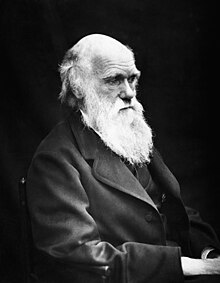Benutzer:LeCalamar/Karikaturen von Charles Darwin und seiner Evolutionstheorie
Siehe auch: Charles Darwin, Über die Entstehung der Arten und Die Abstammung des Menschen und die geschlechtliche Zuchtwahl

Bildbeschreibung



Provenienz
Literatur
- Browne, Janet: “Making Darwin: Biography and the Changing Representations of Charles Darwin.” In The Journal of Interdisciplinary History 40 (2010): 347-373.
- Browne, Janet: “Charles Darwin as a Celebrity.” In Science in Context 16 (2003): 175-194.
- Browne, Janet: „Darwin in Caricature: A Study in the Popularization and Dissemination of Evolution.“ In Proceedings of the American Philosophical Society 145 (2001): 469-509.
- Blühm, Andreas und Louise Lippincott: Tierschau. Wie unser Bild vom Tier entstand. Köln, 2007.
- Donald, Diana und Jane Munro: Endless Forms. Charles Darwin, Natural Science and the Visual Arts. Cambridge, 2009.
- Gapps, Suzanne: “Charles Darwin as an Icon.” In Culture and Organization 12 (2006): 341-357.
- Janson, Horst W.: Apes and Ape Lore in the Middle Ages and the Renaissance. London, 1952.
- Kemp, Martin: The Human Animal in Western Art and Science. Chicago und London, 2007.
- Kort, Pamela: Darwin. Kunst und die Suche nach den Ursprüngen. Köln, 2009.
- Larson, Barbara und Fae Brauer: The Art of Evolution. Darwin, Darwinisms, and Visual Culture. Hanover, 2009.
- Voss, Julia: Darwins Bilder. Ansichten der Evolutionstheorie 1837-1874. Frankfurt a.M., ²2009.
- Voss, Julia: „Darwin oder Moses? Funktion und Bedeutung von Charles Darwins Porträt im 19. Jahrhundert.“ In NTM Zeitschrift für Geschichte der Wissenschaften, Technik und Medizin 16 (2008): 213-243.
🔥 Top keywords: Wikipedia:HauptseiteSpezial:SucheGeborgtes WeißSpecial:MyPage/toolserverhelferleinconfig.jsPornhubWichart von RoëllFallout (Fernsehserie)HalvaListe der größten AuslegerbrückenUEFA Champions LeagueKatastrophe auf der EnterpriseSeparatorenfleischBernd HölzenbeinXHamsterBørsen (Gebäude)Louis SalomonChatGPTSusanne WolffLiebe (2012)17. AprilHauptseiteNekrolog 2024BarockDatei:Germany adm location map.svgFriedrichshafenDeutschlandTian’anmen-MassakerRockyFallout (Computerspielreihe)Halyna HutchinsIranUEFA Champions League 2023/24Antonio RüdigerAnnalena BaerbockO. J. SimpsonJerrie MockNosferatu-SpinneMarcel SabitzerKlimbim